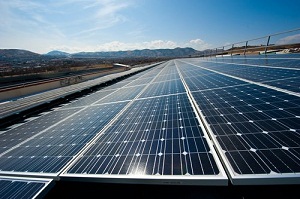Reviewing last week's solar energy news
 Last week offered a variety of news from the solar world, ranging from big money deals and a major buyout to viruses being used in the solar manufacturing process.
Last week offered a variety of news from the solar world, ranging from big money deals and a major buyout to viruses being used in the solar manufacturing process.
The biggest pieces of news last week—in the solar world—was the proposed buyout of SunPower, Inc. by Total, the oil and gas giant. The companies have agreed to an arrangement, under which Total will purchase 60 percent of SunPower’s shares and invest a total of $1 billion in SunPower, allowing the photovoltaic company to speed its plans to increase manufacturing and giving them access to lower-interest rate financing for large projects. The deal is still subject to regulatory review, but is one of the largest deals in the solar world.
Clean Tech Open is again accepting applicants. The project helps innovators in the clean energy space find angel investors and helps them move their project—whether it be a new solar panel technology or water treatment option for developing nations—from research and development phase to commercialization.
Another technology that may fit into that category is being done by researchers and scientists at MIT. A new process developed at the school uses viruses to assemble carbon nanotubes in thin-film photovoltaics, making them more efficient.
The Department of Energy’s Loan-Guarantee Program issued a $2.1 billion loan guarantee last week to support the massive 1,000-megawatt Blythe Solar Power Project being developed by Solar Trust of America in Blythe, Calif. It’s one of the largest loan guarantees that’s been issued thus far. The loan guarantees are instrumental to companies as they build out these large-scale solar projects.
BrightSource Energy Inc., which is also developing large-scale solar projects in the Southwest recently completed a round of financing that included a $168 million investment from Google, which was announced the same day the company secured a $1.6 billion loan guarantee. Now the company is using the security gained through its latest financing round to pursue an initial public offering to raise $250 million more for its projects.
An increasing movement in the solar world is using collaborative purchasing to help bring the costs of solar down. Last week, World Resources Institute (WRI) and Joint Venture: Silicon Valley Network introduced a guide to using collaborative funding by businesses and local governments to reduce the cost of solar. In their 12-step guide they use real-world case studies showing how their collective bargaining, which included participants signing onto the same power-purchase agreements, led to significant savings on solar.
Last week also saw the introduction of Solar Mosaic's first “crowd-funding” project. The unique model allows community members to fund solar projects at community centers and schools by purchasing a $100 “tile,” a piece of a solar panel. Then after an initial period, they’re repaid for investing in the system. It was first launched in Oakland, Calif., and already it’s already sold more than 2,500 tiles. It plans to sell 5,000.
Hawaii’s Department of Hawaiian Home Lands said it built a solar-powered, 19-home community, Kaupuni Village, for low-income indigenous residents. The division is just a pilot, and the up to 1,000 more homes could be built, according to SolarWorld, which supplied the modules.
SolarWorld’s panels also now grace the U.S.’s largest photovoltaic rooftop array. It’s a 4.26-megawatt rooftop on an Avidan Management warehouse in New Jersey. The company said it chose to install the array because it offered its tenants long-term pricing stability.
Image courtesy of NREL.



